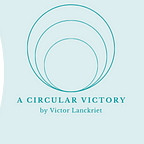European Green Deal and the Circular Economy
Hi everyone and welcome back to the 8th blog post of a Circular Victory. Last week, we talked about the framework I developed in my thesis to assess Circular business models. This framework allows us to get a good overview of the business. This is especially useful to finance companies who are thinking about supporting one of the Circular businesses, because it gives them insight into the longevity and effectiveness of the business.
This week, we are going to look at the European Green Deal and its impact on the Circular Economy.
The European Green Deal
The overall goal of the European Green Deal is to become the first climate-neutral continent by 2050. The EU recognises the dangers of climate change and environmental degradation, so they are setting up a new strategy that will help to solve this crisis. In order to do so, they want to focus on three pillars:
1. There are no net emissions of greenhouse gasses by 2050
2. Economic growth is decoupled from resource use
3. No person and no place is left behind
Within these three pillars, the second point represents a transition to a Circular Economy. Decoupling economic growth and resource use is exactly what the Circular Economy tries to achieve. By becoming Circular, we don’t need to add any raw materials to the manufacturing and consumption cycle to continue economic growth.
In order to detail the commitment to the Circular Economy and set out their strategy in achieving this transition, the EU has made a “Circular Economy Action Plan”.
Circular Economy Action Plan
Interestingly, we are already at the second Circular Economy Action Plan. The first plan was launched in 2015 and had 54 action points. Impressively, all 54 have been delivered or are being implemented. This makes us very hopeful for the 35 actions that were included in the new action plan that was released in March of 2020. These actions include legislative and non-legislative measures.
Now, I am not going to take you through every single action point in the plan. What I do want to show in this blog is the importance of the European Green Deal for the Circular Economy. While it is still a bit on the fringe today, having a massive ally such as the European Union is sure to help pull the Circular Economy into the mainstream. If we think back to the “change drivers” blog (6th blog post), having these legislative measures taken is going to be a huge contributor to drive change. The European Union has the power to reshape the economic landscape of our continent and luckily they are trying to use that power to push us towards a sustainable environment.
For me personally, having the support of the European Union is one of the guarantees that the Circular Economy will make its breakthrough in due time. So while the European Union is taking care of the governmental change drivers, I am trying to do my part to encourages us all to make the individual choices that will allow us to drive the change to a Circular Economy.
Thank you all for another week of attention and I will be back with more next week!
